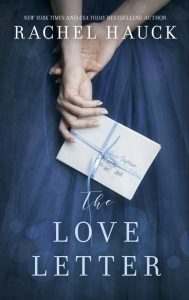by Rachel Hauck, @RachelHauck
Fairytales can’t exist without story world. Where would we be without Cinderella’s magic garden with the fairy godmother? Or Snow White’s dash through the evil forest to meet up with seven spunky dwarfs?
How about Beast’s castle? The enchanted place where Belle found herself detained?
When I blogged in December about Learning from Fairytales: Storyworld Building, I talked about the elements of storyworld being visual, emotional and symbolic.
Today, we’ll look at mystical and societal.
Mystical
Below is an excerpt from Princess Ever After about a long lost princess returning to her great-grandmother’s country.
She looks out the palace window to see a glow in the forest.
“You don’t see a white light? Kind of sparkly? In the woods?”
Franz stared ahead, his hand wrapped around the thick curtain cord. “Is that what you see?”
“Yes, right over there.” Reggie tapped the top left pane. “It’s like a star fell to earth.”
Franz’s complexion paled. “You see a light? In the forest?”
“I do.”
“Then it’s true.” The butler cupped his hands around his eyes and leaned against the window. “The legend is true.”
“What legend?”
“The one, miss, where the true Princess of Hessenberg sees a light in Meadowbluff Forest.” Franz turned to her. “‘Tis a very ancient tale. One old men recount at pubs when they can’t remember their own name. But there’s no fact or truth to the story, mind you. Just a fable. A legend.”
Franz goes on to tell Regina about the legend. It’s mystical and magical, the light Regina sees is rooted in legend. A fable.
Or is it reality?
What was the point of the “glow in the woods?” To confirm to Regina her true identity.
“Couldn’t you just do a DNA test to figure if she’s the true princess or not? Or use family records?”
Yes. I considered those things. Frankly, for a romance about a princess, I thought they were kind of boring.
But here’s what I really wanted to achieve. To show how an eternal, everlasting, almighty God can break into our natural world any place, any time, any where, any way He wants.
Regina is on a journey to restore her family’s rightful place on the earth. The light she sees is otherworldly. It’s God breaking in just for her eyes only. To show her, “Yes, you are the princess.”
It touches her in a place no DNA test or ancestral charts can. It touches her spirit. God is with her.
I’ve used mystical elements in other books. Caroline, in Sweet Caroline, smells a fragrance. Elle, in Love Starts with Elle, sees feather falling from the ceiling. No birds around!
Charlotte, in The Wedding Dress, encounters an odd man wearing purple.
These elements put “skin” on the omniscient, omnipresent living Lord! He is always with us! Even when we don’t see or feel Him.
How can you use this element in your stories? Well, what if your character keeps seeing something odd on her drive to work. Every day, same sign, or the same object and it begins to speak to her.
What if your hero is broke, down on his luck but his gas tank never goes empty? It drives him crazy! What’s going on? But it stirs him to seek for truth.
Is your protagonist a young, single mom. What if gifts of food and money keep arriving at her doorstep?
How do you determine how to create supernatural elements?
- Consider the theme of your story? Destiny? Love? Restoration?
- Consider the protagonist journey. What would most impact him? What would speak to him?
- Consider the setting. Would black feathers on white snow really stand out? How about snow on a southern Georgia beach?
Combine these elements and figure out how to weave in the spiritual thread supernaturally.
Imagine if you could “show” love. Or hope. What does it look like? Write that image into your story!
Regina, a classic car restorer, is on a journey of restoration. She’s in a North Sea country all the way from Florida. She sees the “glow” and runs to it. What she finds is an old classic car, one she loved since she was a girl, with her great Gram’s diaries and treasures.
The glow felt princess-y to me. And the car with the treasures eradicated her last doubt.
Societal
Our protagonist journey must have some effect on the people around him. Maybe not his entire city, but certainly his friends and family.
Often in fairytales, the hero and heroine are impacted, as well as the evil stepmother or queen. Often supporting characters like dancing dishes or mean stepsisters are changed because of the fairytale journey.
On occasion, kingdoms are impacted. In Cinderella, the kingdom got a princess.
In Tangled, the kingdom released balloons and lanterns every year, waiting for the princess to return home.
Those lanterns spoke to the princess even though she lived in a very isolated world and was lied to by her supposed mother.
When she finally ventures beyond her boundaries, she discovers the lanterns aren’t bizarre stars but hope floating for her!
The whole kingdom interceded for her. They rejoiced when she returned and their lives were also changed.
The protagonist journey must somehow, in the end, affect the lives of those around him. It cannot be a journey just for himself. It must be for others as well.
In Regina’s story, returning to her Gram’s country saves them from becoming a province of another nation. But for the hero, who took one small step of obedience, everything changed. Wrongs were righted.
Then as both hero and heroine pressed forward beyond their comfort zones to embrace a new life and calling, the lives of everyone around them changed.
An entire country was changed.
So consider ways your hero’s journey impacts those around him. Think of your favorite fairytale. What element can you weave into your story?
Happily Ever After Writing.
From the New York Times bestselling author of The Wedding Dress comes a story of long-lost love and its redemption in future generations.
Set in stunning upcountry South Carolina, The Love Letter is a beautifully crafted story of the courage it takes to face down fear and chase after love, even in the darkest of times. And just maybe, all these generations later, love can come home in a way not even Hollywood could imagine.

New York Times, USA Today and Wall Street Journal best-selling, award-winning author Rachel Hauck loves a great story. She serves on the Executive Board for American Christian Fiction Writers. She is a past ACFW mentor of the year. A worship leader and Buckeye football fan, Rachel lives in Florida with her husband and ornery cat, Hepzibah. Read more about Rachel at www.rachelhauck.com.


